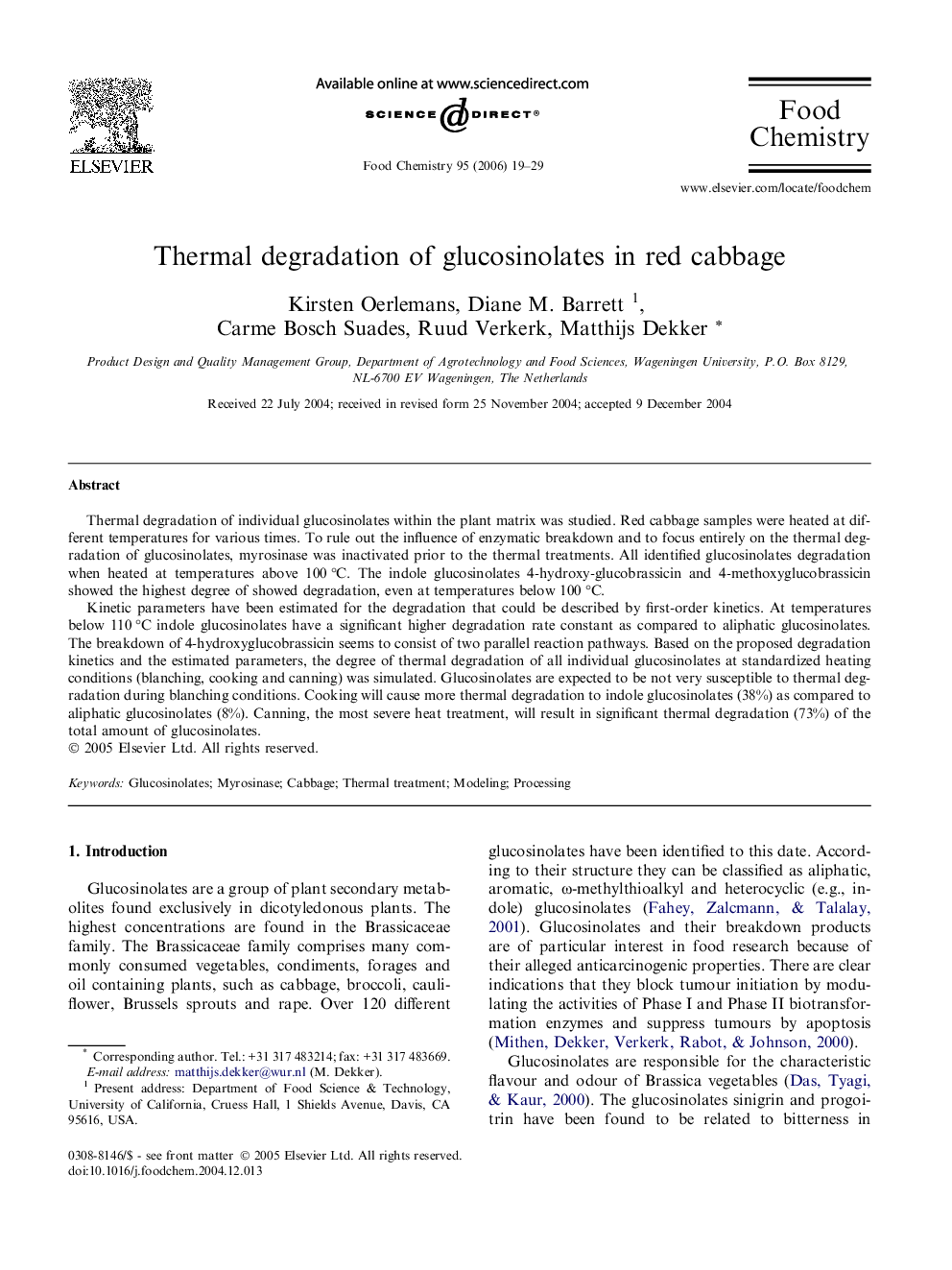| کد مقاله | کد نشریه | سال انتشار | مقاله انگلیسی | نسخه تمام متن |
|---|---|---|---|---|
| 1189632 | 963515 | 2006 | 11 صفحه PDF | دانلود رایگان |

Thermal degradation of individual glucosinolates within the plant matrix was studied. Red cabbage samples were heated at different temperatures for various times. To rule out the influence of enzymatic breakdown and to focus entirely on the thermal degradation of glucosinolates, myrosinase was inactivated prior to the thermal treatments. All identified glucosinolates degradation when heated at temperatures above 100 °C. The indole glucosinolates 4-hydroxy-glucobrassicin and 4-methoxyglucobrassicin showed the highest degree of showed degradation, even at temperatures below 100 °C.Kinetic parameters have been estimated for the degradation that could be described by first-order kinetics. At temperatures below 110 °C indole glucosinolates have a significant higher degradation rate constant as compared to aliphatic glucosinolates. The breakdown of 4-hydroxyglucobrassicin seems to consist of two parallel reaction pathways. Based on the proposed degradation kinetics and the estimated parameters, the degree of thermal degradation of all individual glucosinolates at standardized heating conditions (blanching, cooking and canning) was simulated. Glucosinolates are expected to be not very susceptible to thermal degradation during blanching conditions. Cooking will cause more thermal degradation to indole glucosinolates (38%) as compared to aliphatic glucosinolates (8%). Canning, the most severe heat treatment, will result in significant thermal degradation (73%) of the total amount of glucosinolates.
Journal: Food Chemistry - Volume 95, Issue 1, March 2006, Pages 19–29